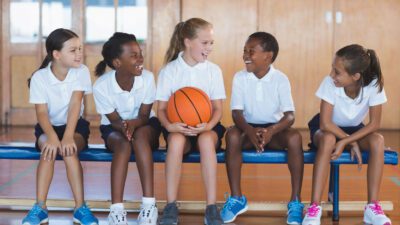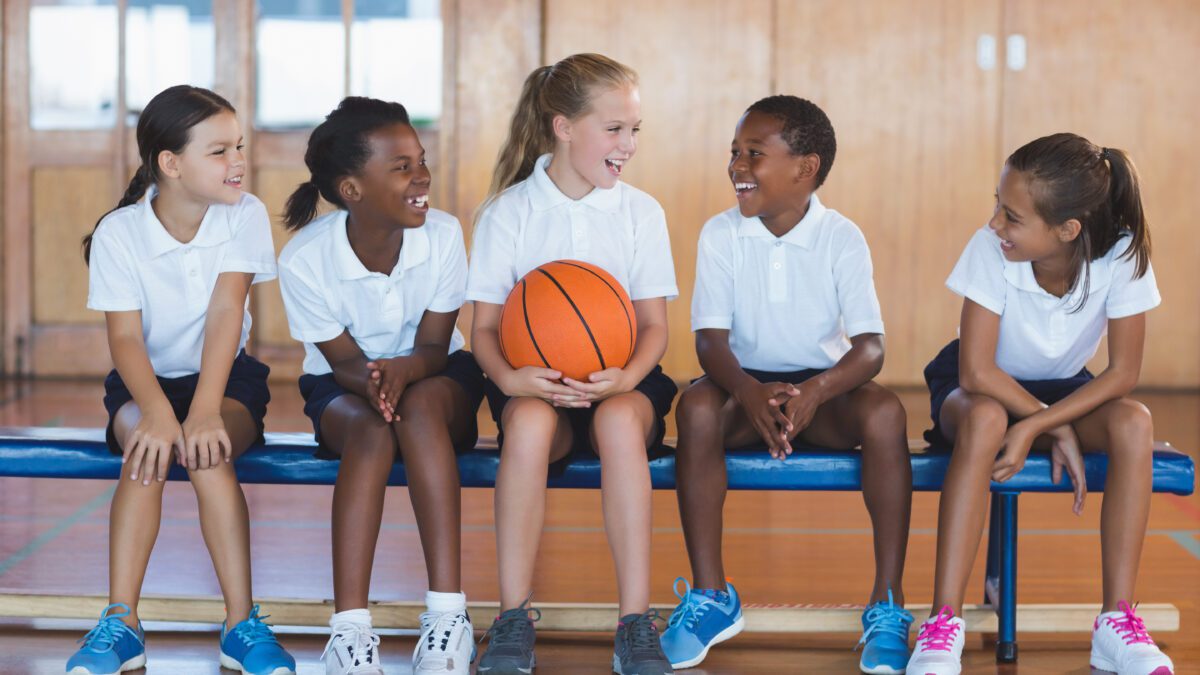



Extract adapted from:
‘Promoting Elementary School Physical Activity’ by Russel R. Pate and Ruth P. Saunders ‘Elementary School Wellness Education’ by Matthew Cummiskey and Frances Cleland Donnelly
The purpose of physical education is to provide students with an ongoing curriculum and instruction designed to develop their skills and knowledge for an active lifestyle. Throughout physical education, students learn the ways of becoming physically literate by developing their skills, knowledge, and confidence to live an active and healthy life from a young age.
What are the Key Benefits of Physical Education?
Physical education is a vital component of building lifelong healthy habits in early childhood. This is mainly due to the link between higher physical activity levels and children’s social, psychological, and cognitive development, and their overall academic achievement. As a result, physical education encompasses a wide range of development and learning opportunities, such as the development of motor skills, understanding the value of physical activity, and development of the ability to achieve and maintain a level of fitness that enhances health.
Physical benefits like the improvement of cardiorespiratory health, muscular fitness, bone health, and maintaining a healthy weight are not the only key advantages of physical education. Other very important learning outcomes of physical education include developing motor skills (as mentioned above), increasing overall levels of concentration, processing speed, and attention spans, as well as potentially decreasing susceptibility to symptoms of depression in the present and future.
A well-prepared physical education program keeps students active for most of the class time, teaches self-management, and provides an enjoyable experience for students alongside the knowledge and skill for physical activity. (CDC, 2013)
A healthy environment within the duration of physical education classes also promotes decision-making skills, which subsequently enhances children’s motivation levels. This also highlights the crucial role a physical education teacher plays as a facilitator of learning to improve the environment of a physical education class. For this reason, creating positive motivational climates is widely and successfully used in physical education.
Inclusion plays an important part in physical education. A well-designed physical education program needs to meet the needs of all students and provide an enjoyable experience for the entire class. With that being said, class organisation and management are one of the most integral parts of making a physical education time fun. For example, a teacher can select games and modify them to make every student more active by avoiding the elimination aspect of a physical activity game to make the most of the class time by creating an opportunity for every student to engage. Such modifications to meet the needs of students with different abilities by providing multiple means of engagement to challenge, motivate and allow them to express and participate in their interests will make physical education more enjoyable and efficient.
While it is important to address physical activity during physical education, it is also important to remember that physical education offers much more than simply providing physical activity during class (Webster et al., 2020). When we think about the aims of physical education, it is important to keep in mind that the physical activity aspect of this process also has a great connection with providing meaningful experiences while developing students’ skills and understanding of healthy habits.
Therefore, physical education needs to connect to the outside world of students as well. The role of the physical education teacher in this occasion is to create a connection between learning physical education in class and in life outside of physical education (Beni et al., 2017; Ní Chróinín et al., 2018; Ennis, 2017). After students experience a variety of physical activities in class, the physical education teacher learns about their interests and can encourage them to engage in physical activities outside of school that align with those interests. This connection will enable the students to act on positive motivations to participate fun physical activity opportunities outside the school setting.
References
1- Centers for Disease Control and Prevention (CDC). (2013). Comprehensive school physical activity programs: A guide for schools. U.S. Department of Health and Human Services.
2- Webster, C.A., Rink, J.E., Carson, R.L., Moon, J., & Gaudreault, K.L. 2020. The comprehensive school physical activity program model: A proposed illustrative supplement to help move the needle on youth physical activity. Kinesiology Review 9(2): 112-121.
3- Beni, S., Fletcher, T., & Chróinín, D.N. 2017. Meaningful experiences in physical education and youth sport: A review of the literature. Quest, 69(3): 291-312.
4- Ennis, C.D. 2017. Educating students for a lifetime of physical activity: Enhancing mindfulness, motivation, and meaning. Research Quarterly for Exercise and Sport, 88(3): 241-250.